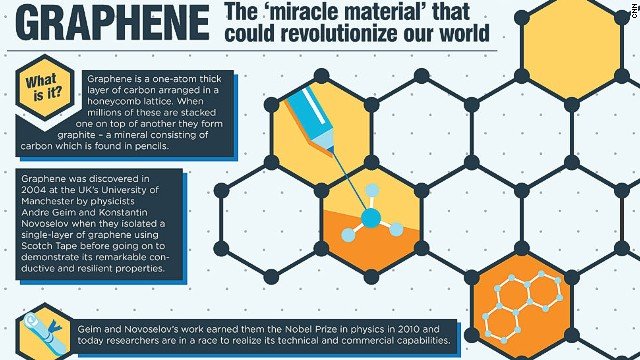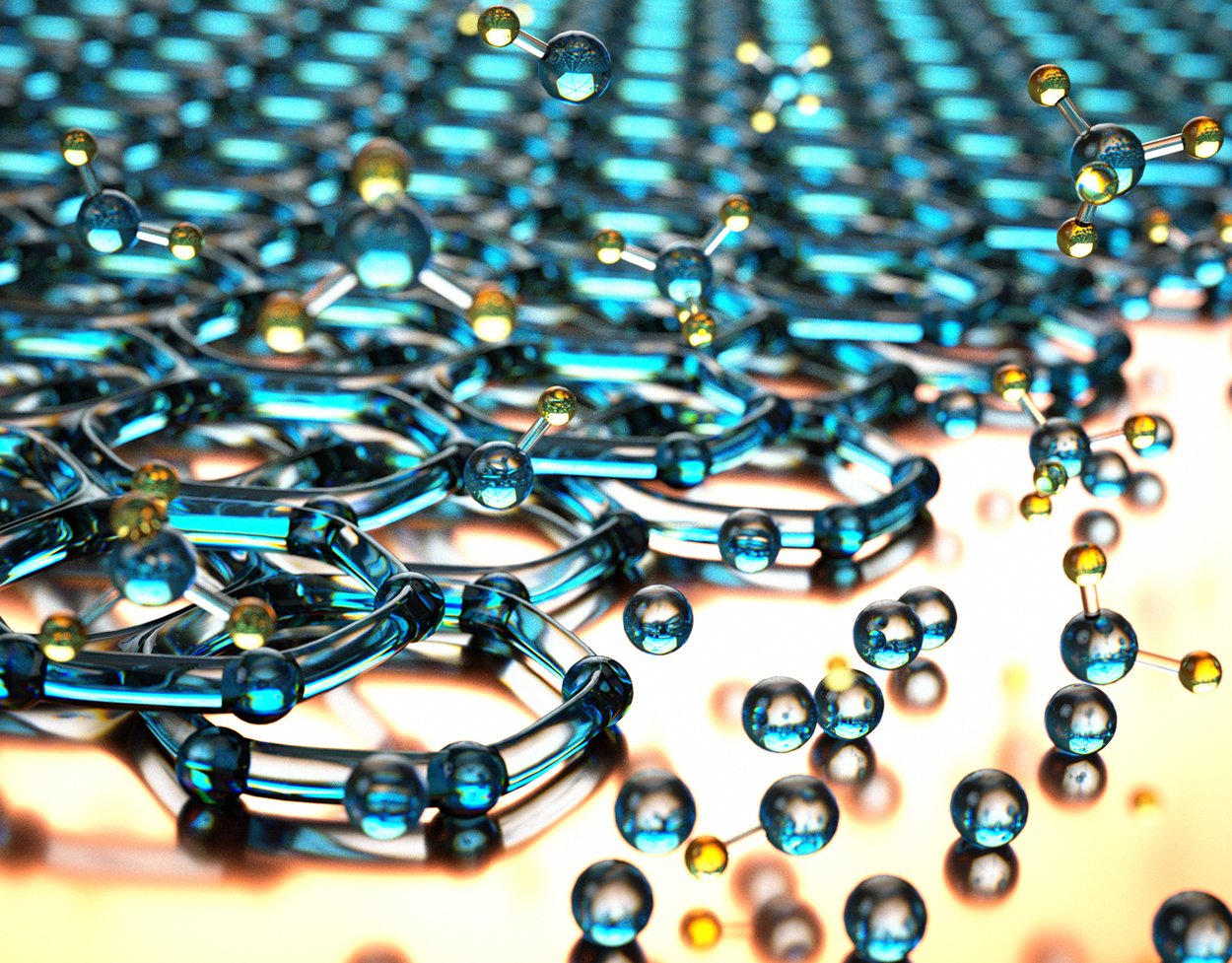
Let me tell you a little about the amazing properties of Graphene. This material is 100 times stronger than the strongest steel in the world and it's a two-dimensional material and it's honey-comb design is made of one atom to form each vertex. The material is transparent, very thin, it's stretchy, a great conductor of electricity, and it's stronger than diamonds or steel. In other words, this material is without a doubt one of the most strongest and interesting materials that has ever been created in human history.

If you were to look at its appearance up close, you'd see that graphene is an atomic scale honey-comb lattice. When it comes to the design of graphene, the carbon atoms are arranged in a regular hexagonal pattern. This material is even said to be a better conductor of electricity than copper and since the material is only one layer thick that means that it is designed to be two-dimensional until the material is stacked on top of itself. Over the last few years this material has unsurprisingly become increasingly popular and it's likely to revolutionize the industry.
A little bit of history: back in 2010, both Andre Giem and Konstantin Novoselov were the ones to be given the Nobel Prize in Physics, “for [their] groundbreaking experiments [that were] regarding the two-dimensional material [known as] graphene.”

How was it discovered?
Giem and Novoselov one day decided to use scotch tape and attach it to a large portion of graphite, and then they proceeded to continuously peel off layer after layer and after they peeled the layers off they would spend time analyzing what they discovered. Throughout history, there have been some scientists who have managed to discover single layered carbon structures, but this was a bit different.
Uses for the material known as graphene commonly lie in the area of nano-technology but here are some to be considered:
- lower the cost of solar cells
- they can be used for transistors that operate at higher frequency
- better chance at having efficient dye sensitized solar cells
- a possibility at a lower cost of display screens for mobile devices
- possibly storing hydrogen for cars that have fuel cells, and much more
Imagine having a television or cellphone that was so flexible you could fold it up (even more so than today for mobile devices) and stick it into your pocket. This material is also a great option to be used for water filtration, with the possibility of filtering sea water into actual drinkable water. This process is traditionally quite costly but back in 2013, Lockheed Martin decided to begin developing a new filter that was going to be using graphene and their model could potentially reduce the current energy cost of filtering the sea water by up to 99% and those are some huge savings!


see:
http://factor-tech.com/connected-world/23977-stretchable-graphene-supercapacitors-bring-soft-robots-and-tech-embedded-t-shirts-a-step-closer/
http://www.popsci.com/technology/article/2013-03/smooth-refreshing-seawater
http://www.popsci.com/technology/article/2012-07/things-you-can-make-graphene-drug-detectors-transistors-and-tasty-drinkable-seawater
https://en.wikipedia.org/wiki/Graphene
